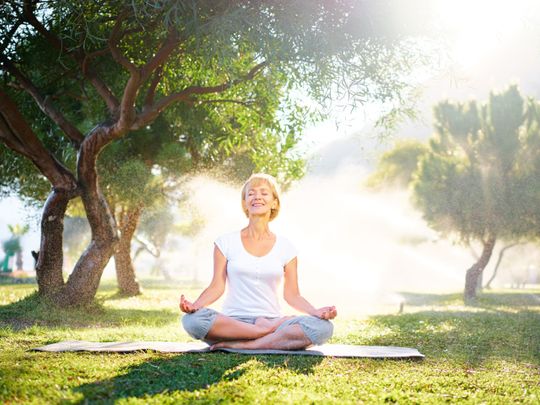
Many people hold wrong notion about the term ‘chakra balancing’. Innocently so. Some see it as a kind of physical ‘fix’ which requires 2-3 sittings after which the’ ‘sufferings’ would end or at least get minimised; so, goes the notion.
Firstly, chakras energies have no physical form to them, like organs, tissues or cells. Anatomically, one can’t locate chakras. And therefore, ‘balancing’ is not a physical act. Secondly, there is no ‘fixing’ process. Balancing is a ‘living’ and ‘experiencing’ process. Energies work at subtle level, and hence, have to be experienced.
This raises the question: So, what is balancing? How can I balance my chakras? First, note that balance brings joy to life. When the highs and lows of life run in extremes, the body, personality and thoughts become unbalanced. Our bodies are not equipped to take stress or high excitement of any kind. Our bodies want to function in their natural rhythm, and when that gets disturbed due to some reasons, then disequilibrium follows. This is not a happy state.
From a Yogic Lens
From yogic perspective of holistic health, in doing asanas, pranayama and following pratyahara (withdrawal of senses from the outer world), a practitioner tries to bring the body and mind into the state of equilibrium. This helps in meditation.
Yoga is synonym to (a) balance state of being. (asanas are stepping stones to higher consciousness which many erroneously take as yoga). When one is living in a balanced state — in mental, emotional and physical realm- one is a yogi. The concept of balance is beautifully seized in this verse: ‘Samatvam YogaUchyate’. Yoga is a balanced state of the body and mind.
Yoga is more than striving to attain a chiselled body. Physical fitness is a narrow view of yoga, which is non-assuring to holistic health.
The 23 Hours
Like asanas, one can do pranayama and feel great for an hour, but what one feels, does and acts after that one hour? Yogic living is concerned with the rest of the 23 hours.
Asanas and pranayama are external acts, that is, ‘doing’ act, to be finished in a certain time. But what about shifting from ‘doing’ to’ being’ state in 24 hours? “Yogah karmasu kaushalam’ meaning, yoga is skilful act or behaviour. Skilful here implies positive. How much positivity exists in action and thoughts in 24 hours, outside that one hour? That determines the how balanced one’s living is.
In balance, there is a sense of joy, a sense of justice and fairness, contentment and closure. In the opposite states, there is disequilibrium. Attaining a state of balance needs practice, especially with emotions. Our thought process is driven by emotions and our actions are driven by our thoughts. Yoga Sutra gives antidote to negative emotions and to be in a homeostasis state.
Balancing the Opposites
How can one attain and sustain a balanced state? For attaining, Yoga Sutra prescribes substituting a negative thought exactly with its opposite, which is to say, a positive thought. (pratipaksa bhavanam). So, if there is anger arising, one can immediately substitute that emotion with the feeling of love.
This whole process has the element of mindfulness; a) mental awareness that anger is rising in me and b) I am aware that it can be countered with the opposite feeling, love. This technique of mind-culturing not only prevents an individual from feeling like a helpless victim but puts him/her into an empowered state.
As regards, sustaining this state, well, it is a game of practice, a consistent one, till the practised positive feeling becomes the second nature. Any negative feeling takes toll on health. For example, as anger arises, body’s physiological system responds by discharging hormones or chemicals which is non-conducive to the body. With repeated anger, the constant release of harmful chemicals causes the body to accumulate toxins, causing ill health. Practicing positive feelings, however, releases happy hormones as (oxytocin, endorphins etc), restoring balance.
So, back to the original question, what is balancing of chakras mean? It simply means balancing of emotions. Anatomically speaking, balancing of hormones and chemicals. Emotions are centre points of thoughts, actions and hormone releases.
There is no physical fixing act to chakras. Balancing chakras implies an act of pure positive living.
Disclaimer: Urmila Rao is a chakra balancing meditation coach, Theta Healer and a sound therapist. All the ideas expressed herein are her own and not professional advice or medical prescription. She can be reached at: milarao2018@gmail.com













